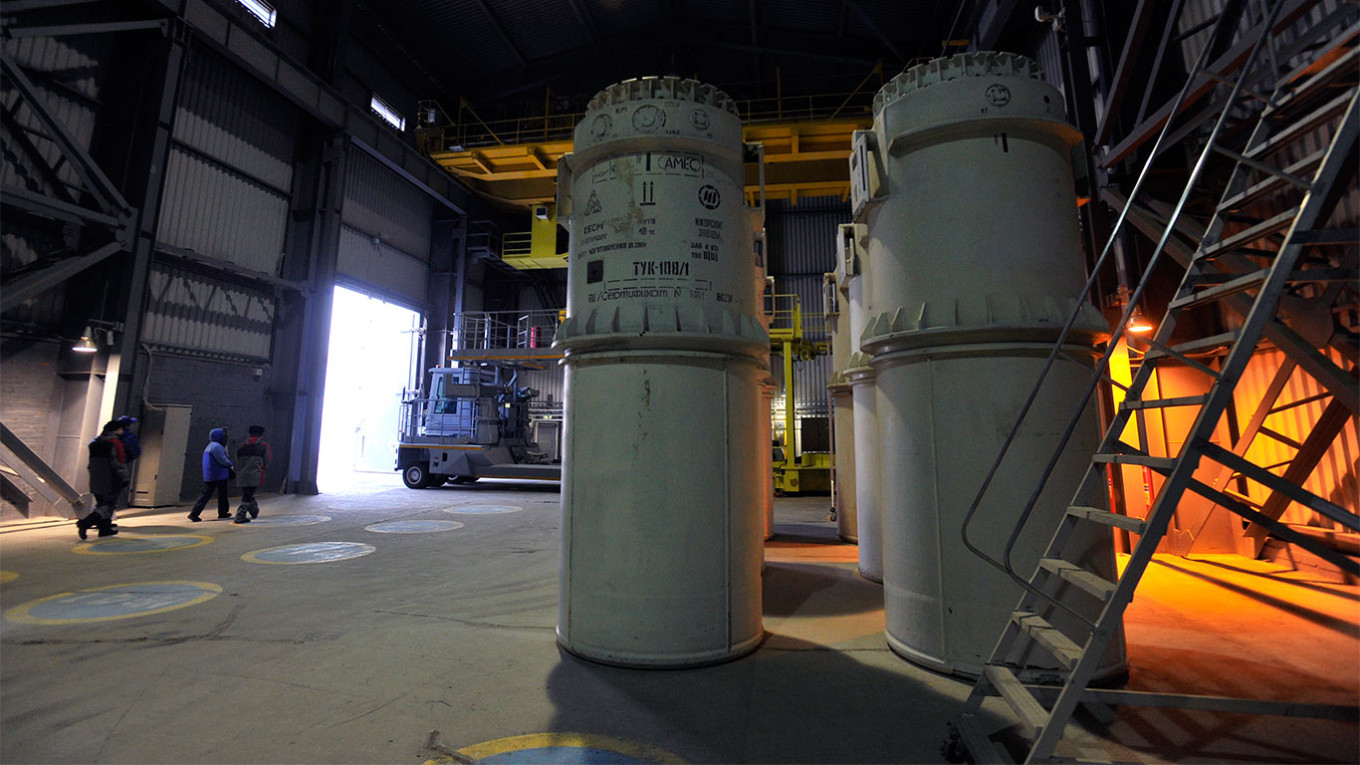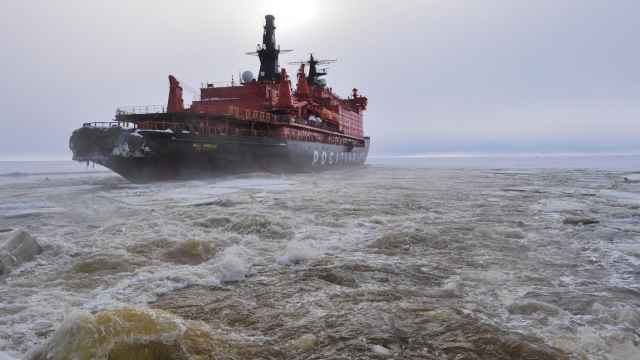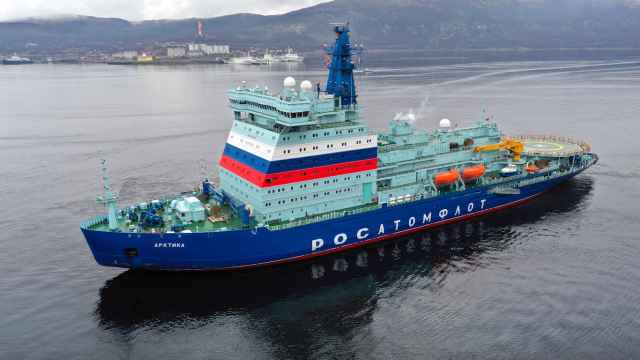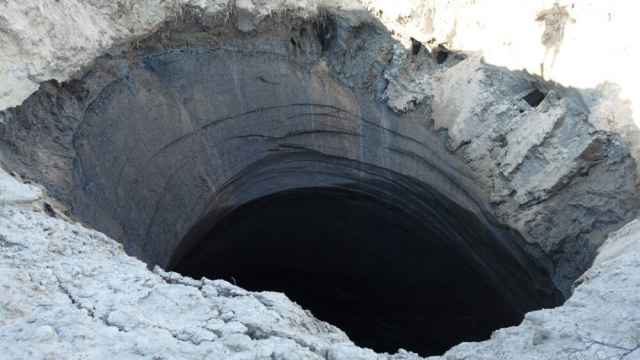There are many casualties of the invasion of Ukraine that will haunt Russia for generations to come. Far from the battlefields, in the country’s northwest loom radioactive threats that remain only half cleaned up and largely ignored.
The Russian Arctic stands to remain one of the most contaminated places on the planet. From old Soviet nuclear submarine bases and maintenance yards on shore to discarded reactors, radioactive waste, and — in some cases — entire nuclear submarines that were intentionally scuttled at sea.
Sadly, it didn’t have to be this way. Following the fall of the Soviet Union, a consortium of Western governments pitched in to help decontaminate the remains of the once-feared Soviet nuclear submarine fleet. Throughout the late 1990s and early 2000s, a total of 198 rusted-out and derelict subs still loaded with spent uranium fuel were safely dismantled through bilateral funding agreements and scientific exchanges with European countries.
But ever since Russian tanks rolled into Ukraine in February 2022, that cooperation has ground to a halt.
The Kremlin insisted at the time that it could continue the nuclear cleanup on its own. But as shown in our new report at Bellona, Moscow’s wartime leadership has little interest — or funding — to finish the job.
The situation at Andreyeva Bay, a former submarine maintenance yard Northwest of Murmansk near the Norwegian border, is especially worrying Throughout its career as a refueling point, the site amassed some 22,000 spent nuclear fuel assemblies from more than 100 submarines, much of which was stored in rusty containers in the open air. These shoddy conditions came horrifyingly to light in 1982, when 600,000 metric tons of radioactive water leaked from the site into the Barents Sea.
After decades of lobbying from Bellona, cleanup at Andreyeva Bay finally began in 2017. It required international cooperation, funded by Norway and using a ship supplied by Italy.
However, numerous damaged fuel rods still remain at the site, stored in irradiated buildings that also need to be dismantled and disposed of. Originally, this project — on which Norway alone has spent some 30 million euros ($32.6 million) — was on track to be completed by 2028. However, since the war began, Moscow has pushed that deadline back to a vague point in the 2030s, while providing little public evidence of progress.
Other threats lurk beneath the ocean. Moscow’s most recent Arctic development plan outlined efforts to lift a host of nuclear garbage scuttled by the Soviets in the Barents and Kara Seas — including the K-27 and K-159 nuclear submarines — by 2035. These submarines pose the greatest challenge for clean-up efforts. Between them, they contain 1 million curies of radiation, or about a quarter of that released in the first month of the Fukushima disaster.
Launched in 1962, the K-27 suffered a radiation leak in one of its experimental liquid-metal-cooled reactors after just three days at sea. Over the next several years, the Soviet Navy attempted to repair or replace the reactors. But in 1979, they gave up and decommissioned the vessel instead.
Too radioactive to be dismantled conventionally, the K-27 was towed to the Arctic Novaya Zemlya nuclear testing range in 1982 and scuttled in one of the archipelago’s fjords. Sinking it to a measly 33 meters took some effort. The sub was weighed down by asphalt to seal its fuel-filled reactors and a hole was punched in its aft ballast tank.
But this solution will not last forever. The sealant around the reactor was only meant to stave off radiation leaks until 2032. More troubling still is that the K-27’s highly enriched fuel could, in the right circumstances, generate an uncontrolled nuclear chain reaction leading to a significant local release of radiation.
The other submarine, the K-159, was added to the toxic subsea catalog in 2003. But its position north of Murmansk, astride some of the Barents Sea’s most fertile fishing grounds and busiest shipping lanes, made it a source of special anxiety. Already a 305-foot-long rust bucket suffering from years of neglect, the K-159 sank to 240 meters while being towed to a Murmansk shipyard for dismantlement, killing nine sailors who were on board to bail out water in transit.
Unlike the K-27, however, no safeguards were put in place to secure the K-159’s two reactors before it sank, meaning it went down still loaded with 800 kilograms of spent uranium fuel. A radioactive release from this wreck would be devastating not only to Norway’s fishing industry, but Russia’s as well.
The project to lift the subs — estimated to cost north of 300 million euros ($326 million) — had been under consideration by the European Bank of Reconstruction and Development (EBRD), which along with Norway and other European nations had been in the process of developing a feasibility study for the massive, technologically demanding retrieval. But since the war began — and the EBRD shelved such considerations—there has been scant progress from Moscow’s side.
As recently as September 2022, a cross-section of Russian officials, engineers and nuclear scientists met to hash out a way to rescue the salvage operation, but the meetings stalled on one insurmountable problem — Russia simply doesn’t have the technology to undertake the operation. It was a Dutch salvage vessel that brought the Kursk to the surface in 2001. With the war continuing to rage in Ukraine, the Netherlands is unlikely to lend its services again.
This leaves the environment in the Russian Arctic in a state that is, at best, unpredictable. Should Moscow continue to prioritize war over the environment, it would only prolong a radiation threat that is — as two decades of progress and international goodwill have shown — solvable. What is clear, however, is that Russia cannot do it alone.
A Message from The Moscow Times:
Dear readers,
We are facing unprecedented challenges. Russia's Prosecutor General's Office has designated The Moscow Times as an "undesirable" organization, criminalizing our work and putting our staff at risk of prosecution. This follows our earlier unjust labeling as a "foreign agent."
These actions are direct attempts to silence independent journalism in Russia. The authorities claim our work "discredits the decisions of the Russian leadership." We see things differently: we strive to provide accurate, unbiased reporting on Russia.
We, the journalists of The Moscow Times, refuse to be silenced. But to continue our work, we need your help.
Your support, no matter how small, makes a world of difference. If you can, please support us monthly starting from just $2. It's quick to set up, and every contribution makes a significant impact.
By supporting The Moscow Times, you're defending open, independent journalism in the face of repression. Thank you for standing with us.
Remind me later.






